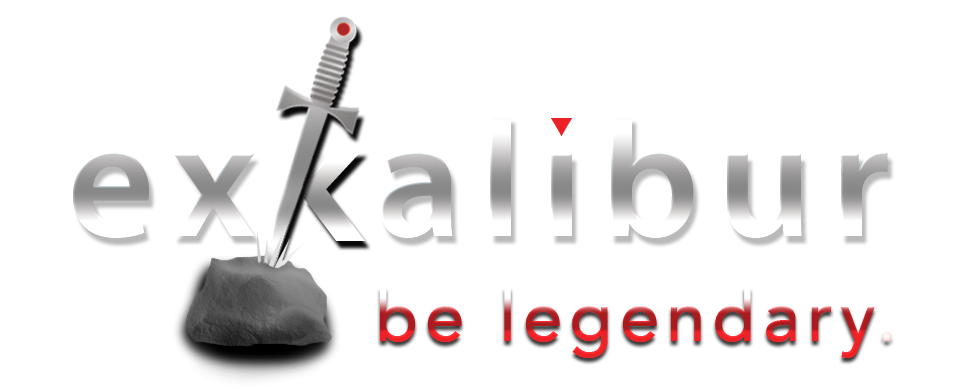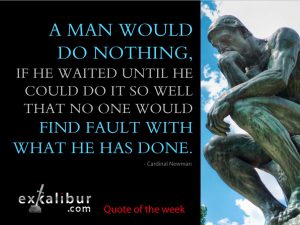When all else fails, could motion masquerade as leadership?
For a while … yes.
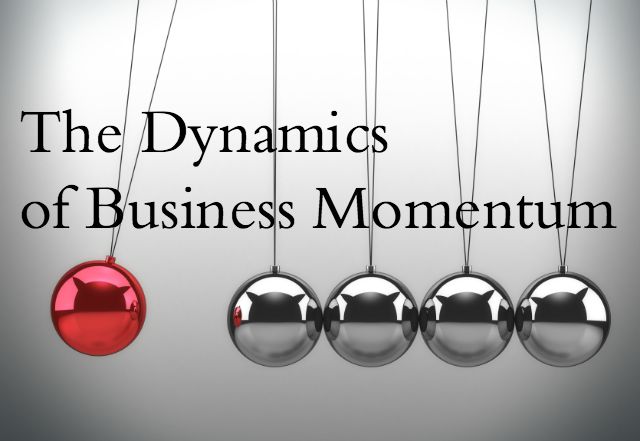
Momentum Has Super Powers
In my experience, momentum is an inescapable force, both for good as well as harm.
I’ve seen terrible business “deals” get done as a result of momentum – say when an overzealous buyer pays too much for a company – or an overzealous candidate leaps at a tantalizing job offer without doing her homework.
It’s usually because they’re swept up in the adrenaline rush, the desperate chase to be the winner and as the momentum escalates, the fundamentals that drove the initial decision have vacated.
Momentum has taken its place and succeeds in its relentless march to victory.
When you let it have the run of the place without intervening checks and balances, the result is rarely satisfactory.
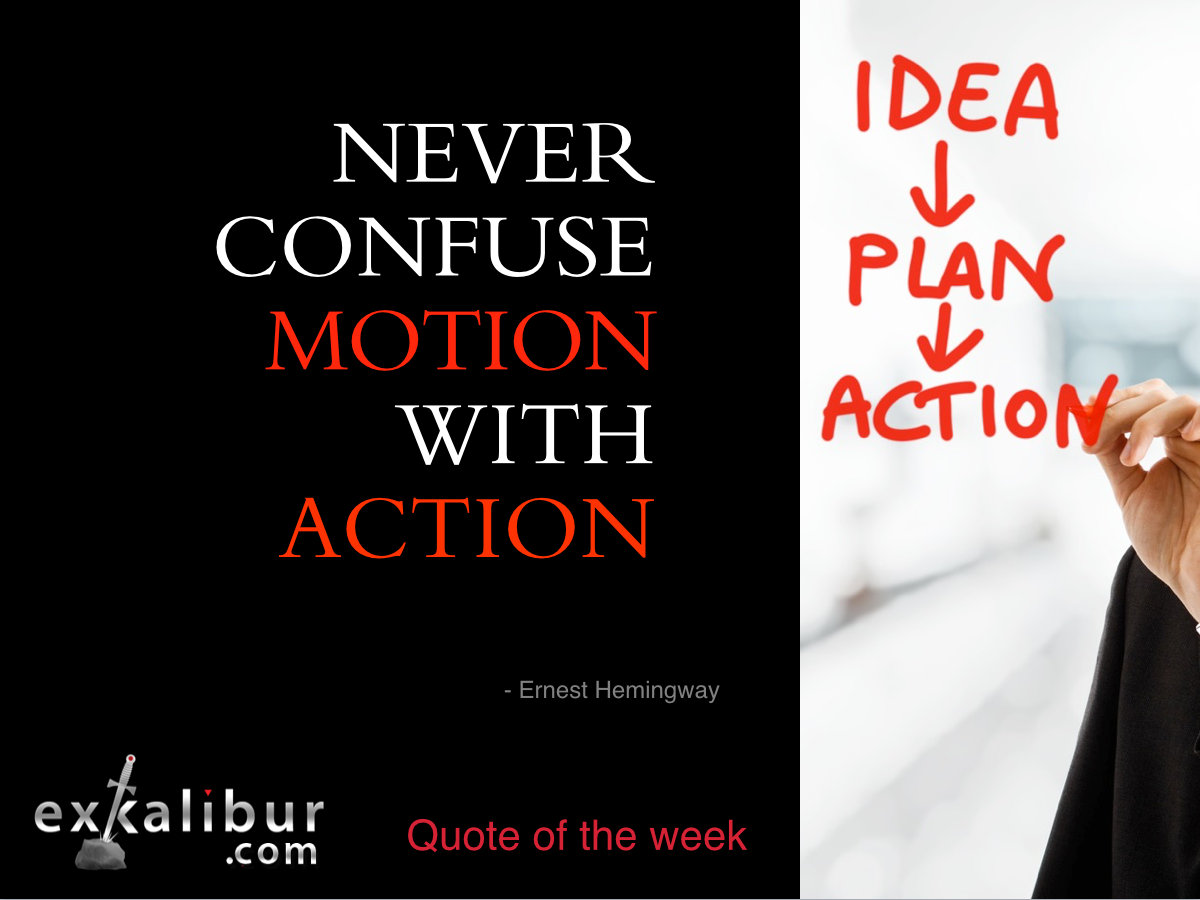
Momentum is an inescapable force. If you create it … and control it … it will turbocharge your business via @Exkalibur Click to Tweet
Ever start a project which ran out of steam?
I‘m sure you have … but it’s not because the idea is no longer valid or the results undesirable.
Nope. It’s because other priorities jumped in line … energy was diverted to new projects … and the original project died on the vine.
Newton’s First Law of Motion
Isn’t it interesting that Sir Isaac Newton’s First Law of Motion perfectly predicted this more than 300 years ago?
“An object at rest tends to stay at rest and an object in motion tends to stay in motion with the same speed and in the same direction unless acted upon by an unbalanced force.”
In other words … an object in motion tends to stay in motion unless acted upon by another force which slows it down … like unexpected obstacles, new priorities, emergencies … any force that gets in the way.
Most of us are familiar with the legend of Newton’s apple, which fell on his head and triggered his musings about the Universal Law of Gravitation. An unlikely but apocryphal story.
It may not be as clear, but Newton’s laws of motion offer incredible insights to leaders across all types of organizations.
The Dynamics of Momentum is a powerful driver
Newton’s First Law of Motion focuses on the physics of movement, but the dynamics of “momentum” apply equally to people and organizations.
These dynamics embrace such descriptors as inertia, mass, speed and velocity, which are equally valid terms when applied to our businesses.
Newton reasoned the more mass an object has, the more inertia it possesses, and that a more “massive object” has a greater tendency to resist changes in the state of motion.
Let’s translate that.
Inertia in our business is not a good thing
When we hear the word “inertia” applied to the state of our business, it’s not a compliment, is it?
Instead, it’s an unflattering observation about a state of rest that resists a change in its current state of motion, i.e., our business has run out of fuel and has no energy to propel it forward.
It’s common sense that the more entrenched we are in our ways, the more immobile our organization is and the harder it is to move it forward.
What’s missing is that “unbalanced force” to arouse your people, to shake things up and stimulate movement and momentum.
If you’re not moving, you’re less likely to start moving
Newton concluded that objects tend to keep on doing what they’re doing and if resting, continue to remain at rest.
If we stand still – if you don’t revitalize your company as well as our executive team and employees and lead by creating an unbalanced force – you won’t achieve the necessary momentum to keep up as your business world races past.
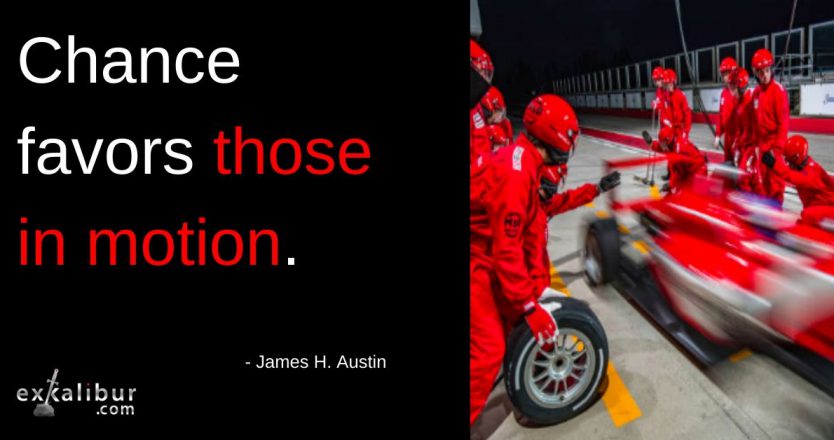
No Momentum? No Deal!
In countless ways, you’ve probably experienced this in your business life.
An important customer negotiation that drags out interminably almost never has a favorable outcome.
A recruiting process that drags rarely captures the top candidate.
You’ve probably discovered that phone tag played out over an extended period rarely bears the promise that was originally envisioned, and often simply peters out.
Try this experiment
One frequently cited example of Newton’s first law is what happens when you carry a baking dish with water around an oval track.
Consider that the water spills whenever the state of motion of the container is changed, quite similar to our experiences in working with our teams:
- When the container is at rest, the water spills when you attempt to move it.
- When the container is in motion, the water spills when you attempt to stop it.
- When the container is moving in one direction, it spills when you attempt to change the direction.
Go ahead. Spill the water
In the challenging businesses we run, we should be prepared to “spill the water” whenever change is required … and it is required now more than ever.
If you build momentum by moving toward your objective with even the smallest steps, you’ll be amazed at how that wave of energy will energize the process and help you drive something to the next level that would otherwise languish.
We’re working hard to provide practical strategies, tools and tips to help you become a More Effective Leader. We’ve identified some Featured Articles to help you get started. Check out the Featured Articles in our Leadership Library.
Get things moving with projects that are stalled.
Stop activities that are accomplishing nothing.
Change the direction of ventures that are not working.
You need to stimulate motion … action … momentum … and move forward at an accelerated pace to face these new challenges.
Momentum is an Extraordinary Force
Momentum is an extraordinary force that can fuel your business success, but it requires leadership that stimulates action.
Ready, fire, aim.
Get rid of the deadwood, remove the immovable objects and create the momentum that can help propel you to victory.
Question: Look carefully at your business. Can you identify when the forces of Momentum have significantly helped your business. Where have they hurt it?
If you’re active on LinkedIn, you can find me there or on our Building a Business page on Facebook to share your thoughts and comments.
